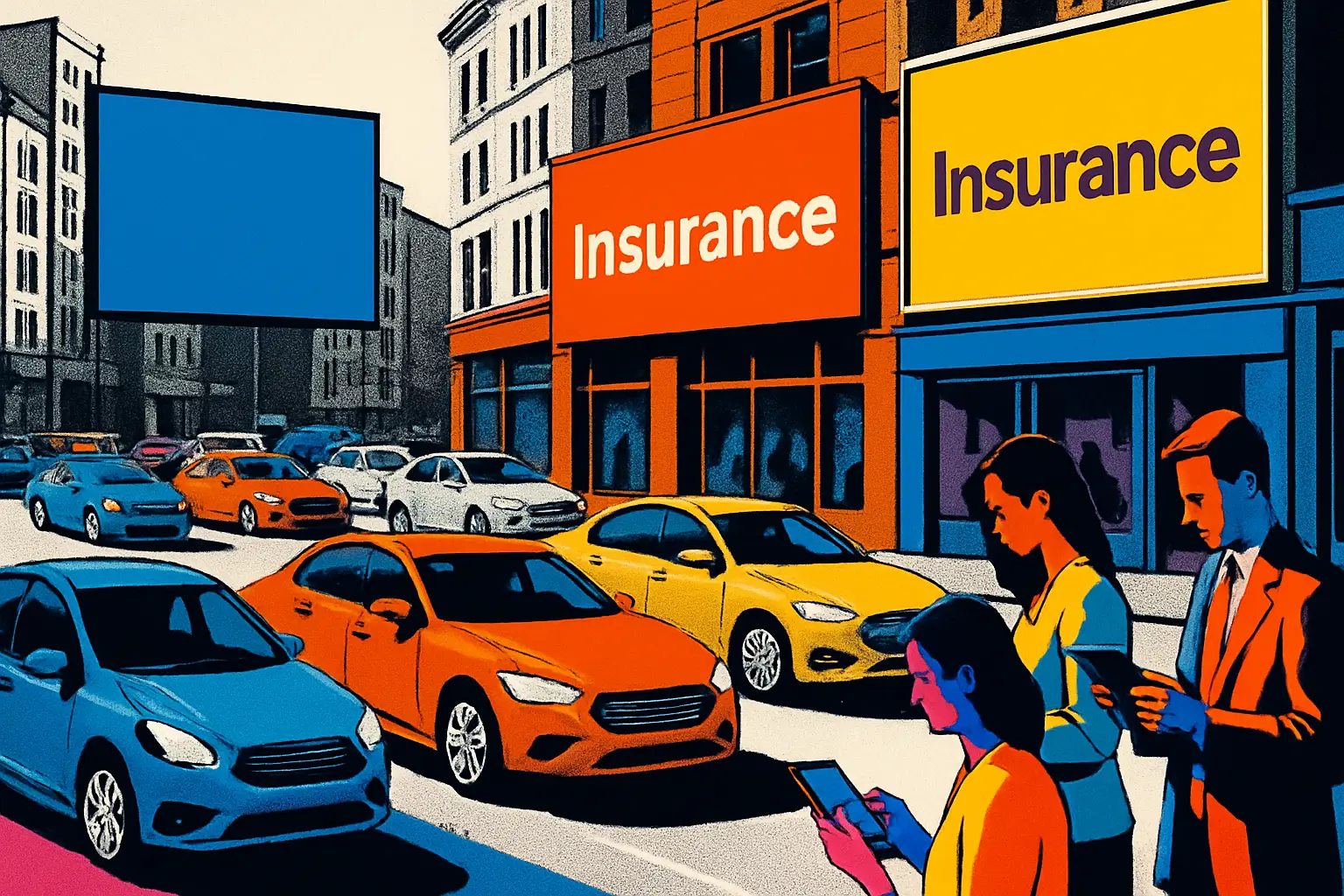A plain-English UK guide to car insurance types, costs, new trends like telematics and AI, plus steps to get a better deal without the faff.
Cut your car insurance costs without the faff
No jargon, no fluff - just what you need to pay less and stay covered.
Why this matters right now
Car insurance is shifting fast. Prices are sensitive to where you live and how you drive, while new tech is changing claims, pricing and cover. If you understand the basics and a few new trends, you can pick a policy that fits your life and budget without overpaying.
Is this you?
- New driver or recently moved, unsure what cover you actually need
- Busy motorist who wants a fair price without spending hours comparing
- EV owner wondering if premiums are still higher
- Careful driver considering a black box policy for savings
- Anyone fed up with renewal hikes and confusing small print
The nuts and bolts you should know
Car insurance types in the UK:
- Third party only (TPO) - the legal minimum. Covers damage to others. Not your car.
- Third party, fire and theft (TPFT) - adds fire and theft cover for your car.
- Comprehensive - includes your car’s damage, even if it is your fault. Often better value.
Key terms:
- Excess - what you pay towards a claim. Higher excess, lower premium, but do not overdo it.
- No Claims Discount (NCD) - each claim-free year stacks up a discount. Consider protecting it.
- Telematics - a small device or app tracks your driving. Safe drivers can save up to 30% with some insurers (source: J.D. Power - https://www.jdpower.com/business/insurance/usage-based-insurance-trends).
- Claims are getting faster as insurers use AI to assess damage and authorise repairs in hours, not days, improving accuracy too (source: McKinsey - https://www.mckinsey.com/industries/financial-services/our-insights/how-ai-is-reshaping-insurance).
EV note:
- Early EV premiums were punchy. As repairs improve, rates are becoming more competitive (source: IIHS - https://www.iihs.org/topics/insurance/electric-vehicles).
Cyber and connected cars:
- Modern vehicles create cyber risks. Some insurers now offer digital cover for hacks and software issues (source: Deloitte - https://www2.deloitte.com/us/en/insights/industry/automotive/automotive-technology-trends.html).
Your menu of choices
Pick the cover shape first, then layer on features.
| Policy type | Typical premium level | What it covers | Ideal for |
|---|---|---|---|
| Comprehensive | Medium | Your car, others, fire, theft, some extras | Most drivers seeking value |
| TPFT | Medium-low | Others, plus your fire and theft | Older cars or tight budgets |
| TPO | Low | Damage to others only | Rare cases, not recommended |
| Telematics add-on | Varies | Usage-based pricing via driving data | New or careful drivers |
| EV-focused policy | Varies | Battery, cables, software, courtesy EV | EV owners |
Extras to consider:
- Courtesy car, windscreen cover, legal expenses, breakdown, protected NCD.
- Cyber cover for connected vehicles (Deloitte link above).
- Greener-driving incentives and sustainable products rewarding eco choices (source: WEF - https://www.weforum.org/agenda/2023/sustainable-insurance/).
Buying routes:
- Direct online with insurers or through digital platforms that let you compare and buy quickly, often without brokers (source: CB Insights - https://www.cbinsights.com/research/insurance-tech-trends/).
Price, impact and real-world trade-offs
What moves the price:
| Factor | Trend | What it means for you | What to do |
|---|---|---|---|
| Driving behaviour | Telematics rewards safer habits | Up to 30% off for safe drivers | Try a black box or app (J.D. Power) |
| EV costs | Stabilising as repairs improve | More competitive premiums | Compare EV-specialist cover (IIHS) |
| Claims handling | AI speeds assessments | Faster payouts and repairs | Ask about digital claims (McKinsey) |
| Climate risk | Premiums vary by location | Higher in high-risk areas | Shop around, consider garaging (NAIC - https://content.naic.org/cipr-topics/climate-risk-and-resilience) |
Risks and returns:
- Paying a very high voluntary excess lowers your premium but can sting at claim time.
- Skipping key extras may save now but cost more later if you need them.
- Telematics can drop your price, but sloppy driving may raise it.
Can you get it and what you will need
- Full or provisional UK licence, driving history, motoring convictions if any.
- Vehicle details: make, model, year, mileage, modifications, security features.
- Address and overnight parking - street, driveway or garage.
- Annual mileage estimate and usage - commute, business, social.
- For telematics: consent to data collection and keep the device or app active (J.D. Power).
- For EV or connected features: software version, charger use, and any manufacturer security updates (Deloitte).
From quote to covered in simple steps
- Decide the cover level and must-have extras.
- Gather licence, NCD proof and car details.
- Get multiple quotes on a trusted comparison platform.
- Check excesses, exclusions and courtesy car terms.
- Consider telematics or EV-specific cover options.
- Confirm start date and cancel any overlap.
- Save documents and enable app notifications.
- Review at renewal, not just auto-renew.
The upsides and the niggles
Pros:
- Comprehensive can be cheaper than TPO for many drivers.
- Telematics can reward careful habits with meaningful discounts (J.D. Power).
- AI-driven claims can get you back on the road faster (McKinsey).
- EV cover is improving as repair networks mature (IIHS).
Cons:
- Location-based risk can push up premiums (NAIC).
- Telematics requires data sharing and consistent good driving.
- Cheap policies may hide high excesses or weak courtesy car terms.
- Cyber risks mean more to think about with modern cars (Deloitte).
Red flags before you click buy
- Excess stack: compulsory plus voluntary can be larger than you expect.
- Courtesy car limits: type, duration, and availability during non-fault repairs.
- Exclusions: ride sharing, business use, or international driving may need add-ons.
- Data privacy: understand what your telematics app tracks and how it affects pricing.
- Climate-linked surcharges in certain areas - compare broadly if your postcode is high risk (NAIC).
If this is not quite right
- Pay-per-mile or limited mileage policies if you drive less.
- Car club membership if you rarely need a vehicle.
- Add-on breakdown cover from a specialist for better rescue terms.
- GAP insurance for new or financed cars to cover depreciation gaps.
- Enhanced cyber cover if your car is highly connected (Deloitte).
Quick answers to common questions
-
Are black box policies only for new drivers? No. Any careful driver can try telematics for potential savings up to around 30% with some insurers (J.D. Power). It suits low-mileage and steady drivers.
-
Are EV premiums still higher? They are becoming more competitive as repair times fall and parts logistics improve (IIHS). Compare EV-specific policies and check battery cover.
-
How fast are claims now? Many insurers use AI to assess damage quickly, often approving simple claims much faster than old-school processes (McKinsey). You still need clear photos and details.
-
Will climate change affect my premium? Possibly. Areas with higher weather risk can see pricier cover as models update (NAIC). Garaging, security and shopping around help.
-
Do I need cyber cover? If your vehicle is connected, it is worth considering policies that include digital protections and software-related events (Deloitte). Check exclusions.
-
Is comprehensive always pricier than TPO? Not always. For many drivers, comprehensive offers better value and sometimes lower premiums due to risk profiles. Always compare.
Do this next
- List your must-haves: cover level, courtesy car, excess ceiling.
- Compare at least five quotes side by side, including telematics options.
- If you want a quick, no-fuss run-through, try switcha to line up clear quotes and see where you can shave costs without slicing cover.
Small print you should actually read
This guide is general information, not financial advice. Policies vary by insurer and personal circumstances. Always read the policy wording, check exclusions and excesses, and confirm that features match your needs before you buy or switch.
Get smarter with your money
Join thousands of Australians who are taking control of their financial future
FAQs
Common questions about managing your personal finances
Begin by tracking every expense for one month. Use an app or spreadsheet. No judgment. Just observe your spending patterns.
Cancel unused subscriptions. Cook at home. Compare utility providers. Small changes add up quickly.
Aim for 20% of your income. Start smaller if needed. Consistency matters more than the amount.
Choose reputable apps with strong security. Read reviews. Check privacy policies. Protect your financial data.
Pay bills on time. Keep credit card balances low. Check your credit report annually. Be patient.
Still have questions?
Our team is ready to help you navigate your financial journey
More financial insights
Explore our latest articles on personal finance and money management




